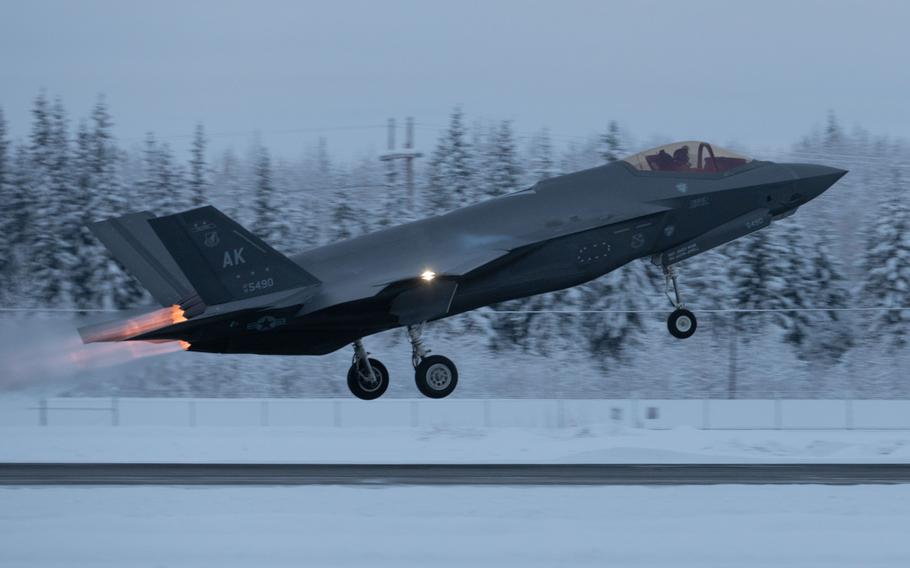
An F-35A Lightning II takes off from Eielson Air Force Base, Alaska, in December 2023. (Carson Jeney/U.S. Air Force)
(Tribune News Service) — Lockheed Martin Corp. is still delivering F-35 fighter jet aircraft with quality defects after 13 years of production, according to the Pentagon test office’s annual weapons-evaluations report.
Quality defects from the production line “are still being discovered in the field,” the assessment found. In one case, a US Marine Corps squadron in California found defects with “a number of F-35C aircraft delivered” to the unit for the fiscal year ending Sept. 30, it said.
On the positive side, internal reports by the Pentagon’s F-35 program office indicate a 47% drop between 2016 and 2023 in poor production-line practices resulting in scrapped parts, rework and repair and a 63% reduction in quality problems in delivered jets, according to the test office.
Lockheed Martin averaged a minuscule number of quality problems per delivered aircraft last year “with the vast majority classified as minor,” the program office in a statement.
Lockheed Martin said in a statement that the information in the report is dated and “does not reflect the current status of the program.” It said what are known as “quality escapes” can include minor items “such as an incorrect serial number on paperwork.”
The annual public test report finding and its classified sections are likely to be scrutinized by Defense Secretary Pete Hegseth when he turns his attention to the status of major weapons systems, led by the F-35.
Elon Musk, an adviser to President Donald Trump put in charge of boosting government efficiency, has singled out the $485 billion acquisition program, saying in December that “some idiots are still building manned fighter jets like the F-35” in an age of drones, Musk said.
The first indication that Musk is having an effect would be in the president’s fiscal 2026 defense budget if it recommends major reductions to the Pentagon’s goal of continuing to expand its fleet of F-35s.
In addition to calling renewed attention to F-35 quality lapses the annual test office report:
• Summarized years of statistics outlining the program’s failure to meet annual “mission capable” rates, or the percentage of time aircraft were available to perform at least one mission. “There has been little improvement in these maintainability metrics since fiscal 2015,” it said.
• Concluded that the F-35 Joint Program Office hasn’t adequately planned rigorous combat testing for its forthcoming but delayed hardware and software upgrade called “TR3,” which will give the stealthy jet its best combat capability to date. The test office assesses that full-blown evaluation of these aircraft won’t happen until mid- to late-fiscal 2026.
• Warned that deficiencies in capability to survive cyber attacks remain across the F-35 program that need to be rectified. The Pentagon program office has “invested in cyber mitigations associated with recent testing, and key test findings are being tracked to closure,” it said.
©2025 Bloomberg L.P.